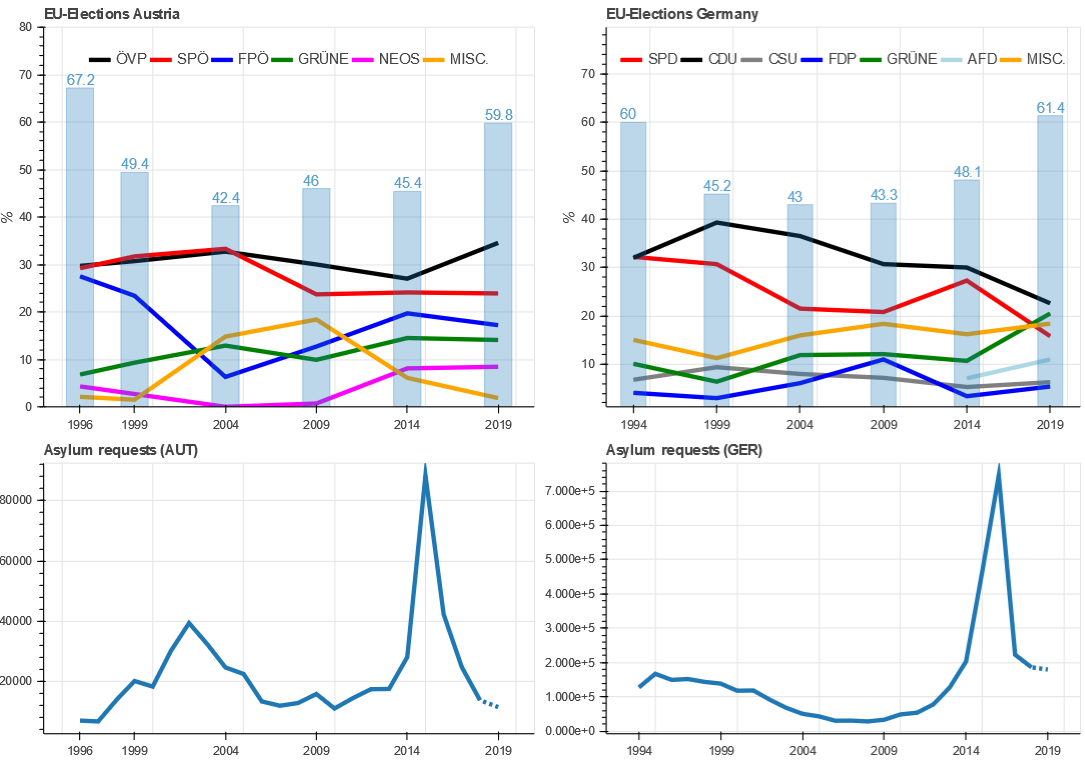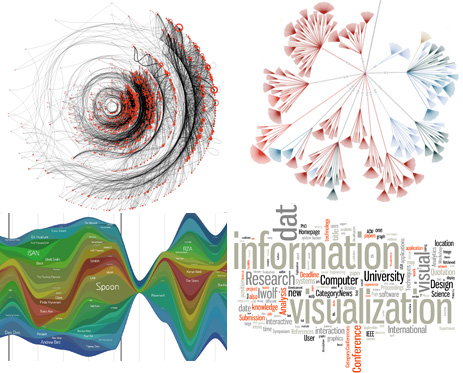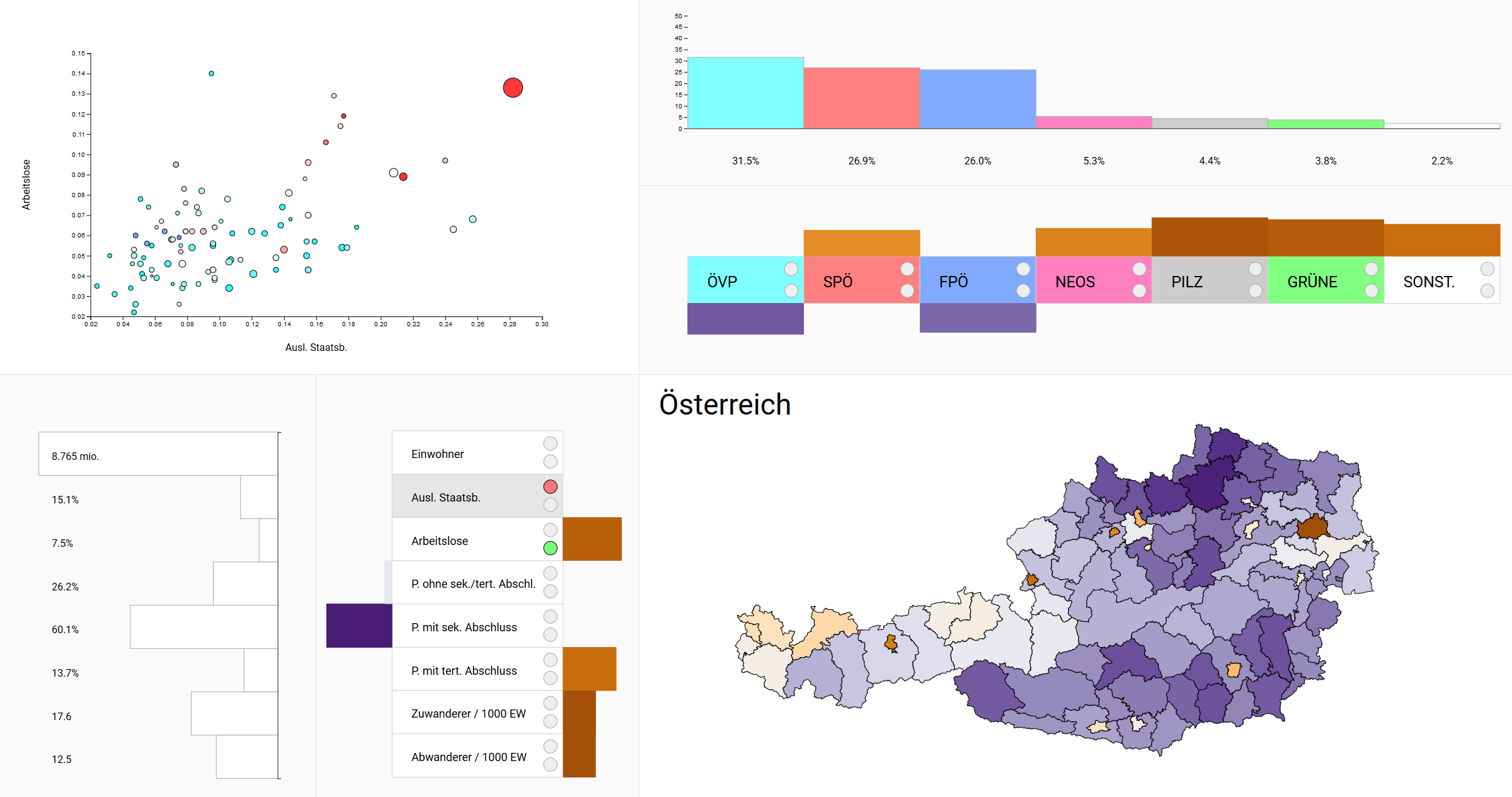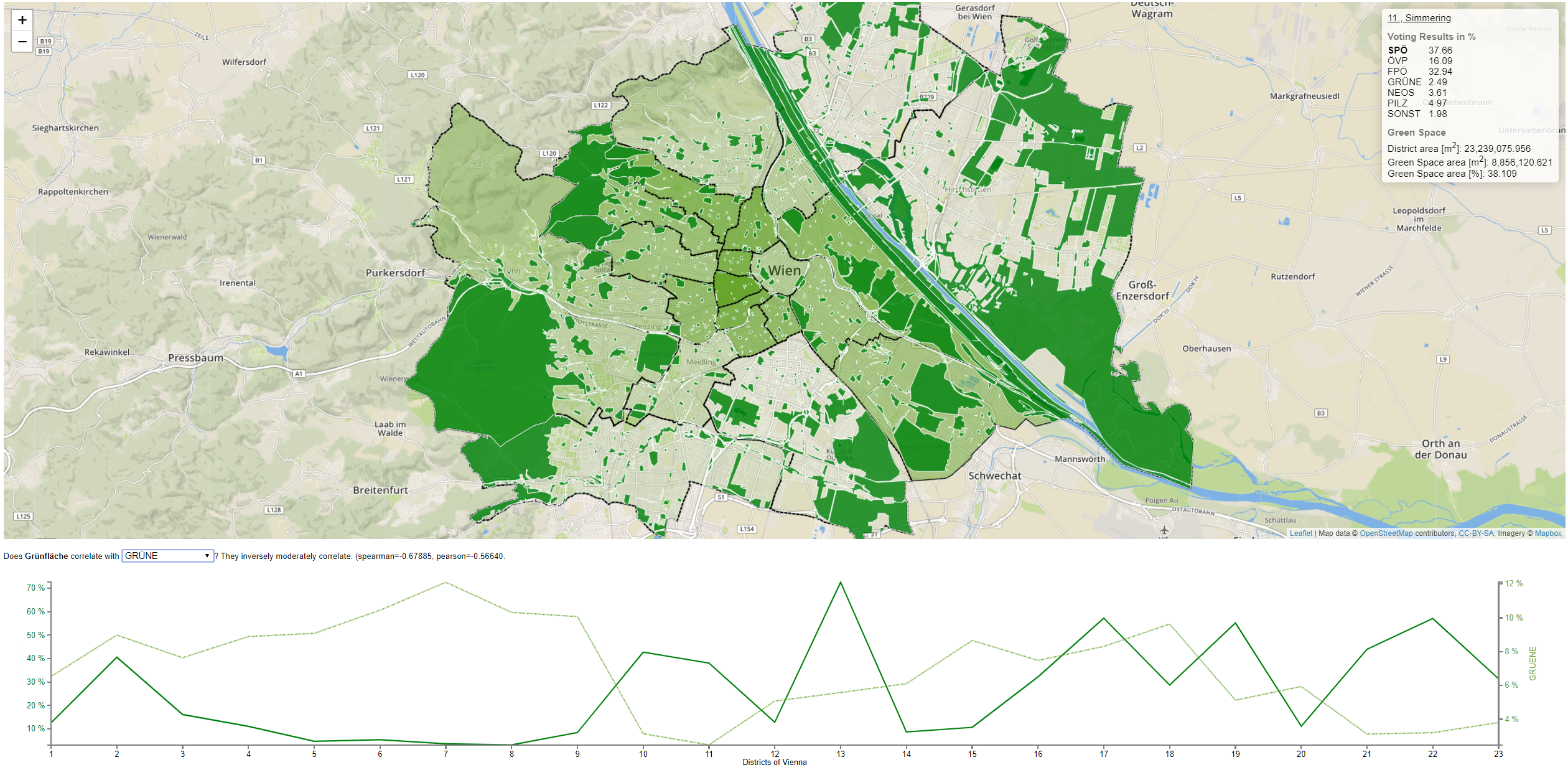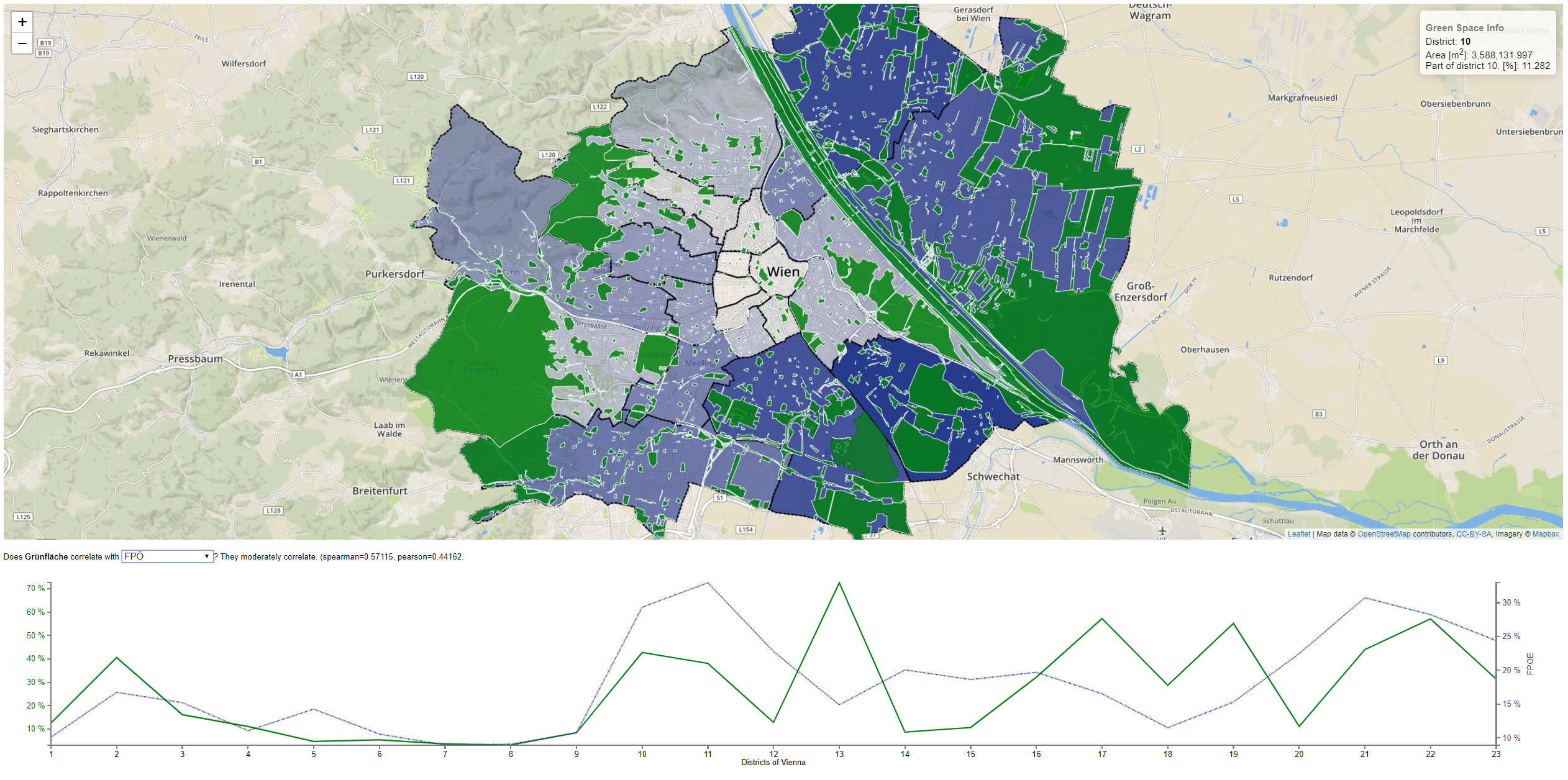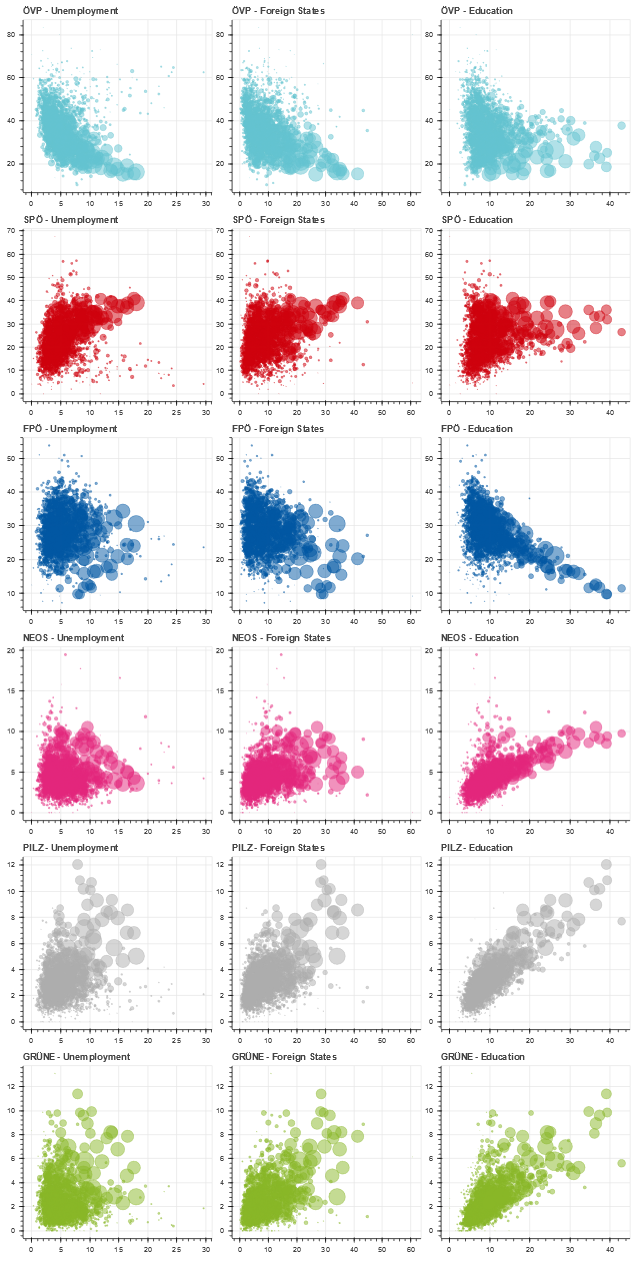Students analyzed different data sets with respect to the Austrian election (Nationalratswahl) 2017. The third exercise was to team up and to investigate a self-chosen question concerning the election data. The results are presented here:
Nationalratswahl 2017 Explorer
Team: Stefan Sietzen
The web interface allows the user to interactively explore various demographic statistics of individual districts, how these statistics correlate which other, how they correlate with the election results, and how they are distributed around the regions of Austria. The image above shows the correlation of the ratio of foreign population in a district with each party, district, and other demographic statistics (brown is positive, purple is negative).
Vienna Green Correlation
Team: Laszlo Kiraly, Gerald Weber
This interactive web application helps to answer the question if there is a correlation between the Green Party voting results and green space share per district in Vienna. There is indeed a correlation - a negative one! This means, the more green area in a district, the lower the fraction of Green Party voters.
Looking at the individual parties, the highest positive correlation can be found for the FPÖ:
Unemployment, Foreign Population, and Education
Team: Alexander Filipp, Fabian Wurm
The scatterplot matrix shows the correlations between three demographic statistics (unemployment rate, amount of foreign population, and education level) with the fraction of votes for each party per municipality (Gemeinde).
Link to the full scatterplot matrix (using Bokeh)
EU Elections and Asylum Requests in Austria and Germany
Team: Michael König, Silvana Zechmeister
The multiple coordinated views visualization was created to investigate the development of participation during EU elections and results of these selections in relation to the development of the asylum requests. In Germany, there is a noticeable increasement of right wing parties. Also, after a continuous decrease in voting participation, both countries, voting participation increased again for the 2019 EU election.
